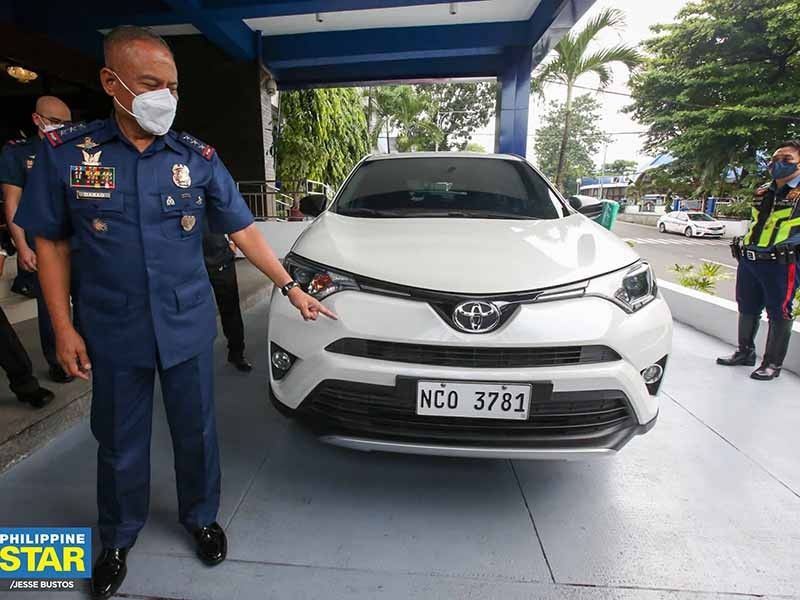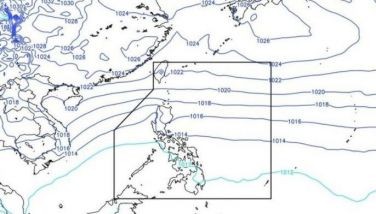The suspect in the viral hit-and-run video went home after his PNP presser. Here's why

MANILA, Philippines — The Philippine National Police hosting a press conference for hit-and-run suspect Jose Antonio Sanvicente — identified in earlier reports as San Vicente — his parents and lawyer has raised questions from the public on how the police treat wealthy people in conflict with the law.
Among those questions is why he was allowed to go home and was not arrested for running over a security guard in Mandaluyong City last week.
"There is no legal ground to take the respondent into our custody...instead we're hoping Mr. Sanvicente will show up at the preliminary investigation tomorrow," Police Col. Jean Fajardo, PNP spokesperson, told reporters Thursday afternoon.
Her boss, Police Lt. Gen. Vicente Danao Jr., earlier argued that Sanvicente could be arrested because the hit-and-run was a "continuing crime"
The Rules of Criminal Procedure provide that a warrantless arrest may only be done if the person has committed, is actually committing, or is attempting to commit an offense; if a crime has just been committed; or if the person is an escaped prisoner. It has been several days since the video of the hit-and-run went viral.
In an earlier Philstar.com report, the Free Legal Assistance Group — commenting on a separate case of an artist arrested without a warrant over a supposedly continuing crime — said the Supreme Court provides that the term “continuing” is intended for determining proper venue or jurisdiction of a crime such as kidnapping.
In some cases, warrantless arrests are called hot pursuit arrests.
READ: SUV driver that ran over security guard yet to surrender to authorities
But there was no hot pursuit in this case. For two press conferences in the same week, the police had the same update: Sanvicente still hadn't turned up.
When he finally did, the national police went as far as hosting a press conference for Sanvicente, his parents and his counsel. Except for the RAV4 involved in the hit-and-run incident, all left Camp Crame after the presscon.
"We consider this case solved considering that we already filed the case and our person of interest or suspect voluntarily gave up to clear the matters at hand," Danao, PNP officer-in-charge, told reporters at a press briefing, saying the ball was now in the Mandaluyong Office of the City Prosecutors' court.
Protocol for warrantless arrests
While PNP procedures allow warrantless arrests, these can only done in specific circumstances to avoid arbitrary arrests, which the 1987 Constitution prohibits. The Bill fo Rights holds that "no person shall be deprived of life, liberty, or property without due process of law, nor shall any person be denied the equal protection of the laws."
In the case of Pestilos vs. Generoso, supra, the Supreme Court ruled that the word "just" connotes immediacy, while the warrantless arrest "should be based on probable cause to be determined by the arresting officer based on his personal knowledge of facts and circumstances that the person to be arrested has committed it."
In Posadas v. Ombudsman, G.R. No. 131492, September 29, 2000, the Supreme Court invalidated warrantless arrests that took place four days after the commission of the crime, indicating that the National Bureau of Investigation personnel carrying out the arrest "had no personal knowledge of any fact which might indicate that the two students were probably guilty of the crime."
Should these two conditions be fulfilled in a warrantless arrest, the usual procedures expected of police personnel still apply. Thus police officers effecting warrantless arrests are supposed to "inform the arrested person of the circumstances of his arrest and recite the Miranda Warning and Anti-torture Warning to him."
The Miranda Warning includes informing the person being arrested of what crime they are being arrested for and also informs them of the following rights:
- The right to remain silent
- The right to have a competent and independent counsel preferably of [their] own choice
- If the person cannot afford the services of a counsel, the government will provide one for them
The police officer is also supposed to ask the person if they understand those rights.
The PNP Guidebook on Human Rights-Based Policing reads: "No one shall be subjected to arbitrary interference with his privacy, family, home or correspondence, or to attacks upon one’s honor and reputation."
Unless they have personal knowledge of a crime in the premises, police cannot enter private property without an invitation or a court order. — with Jonathan de Santos
- Latest
- Trending

































